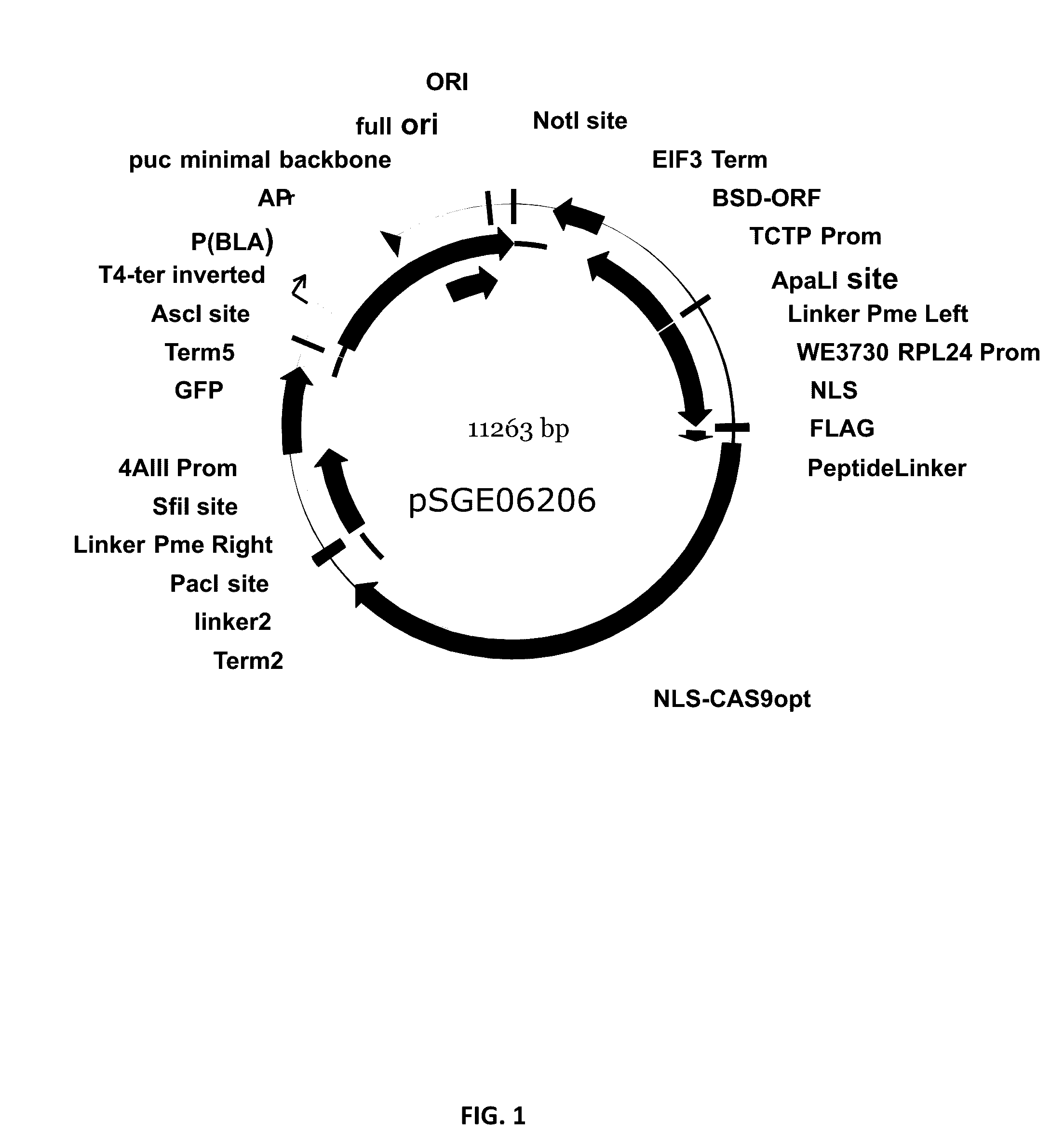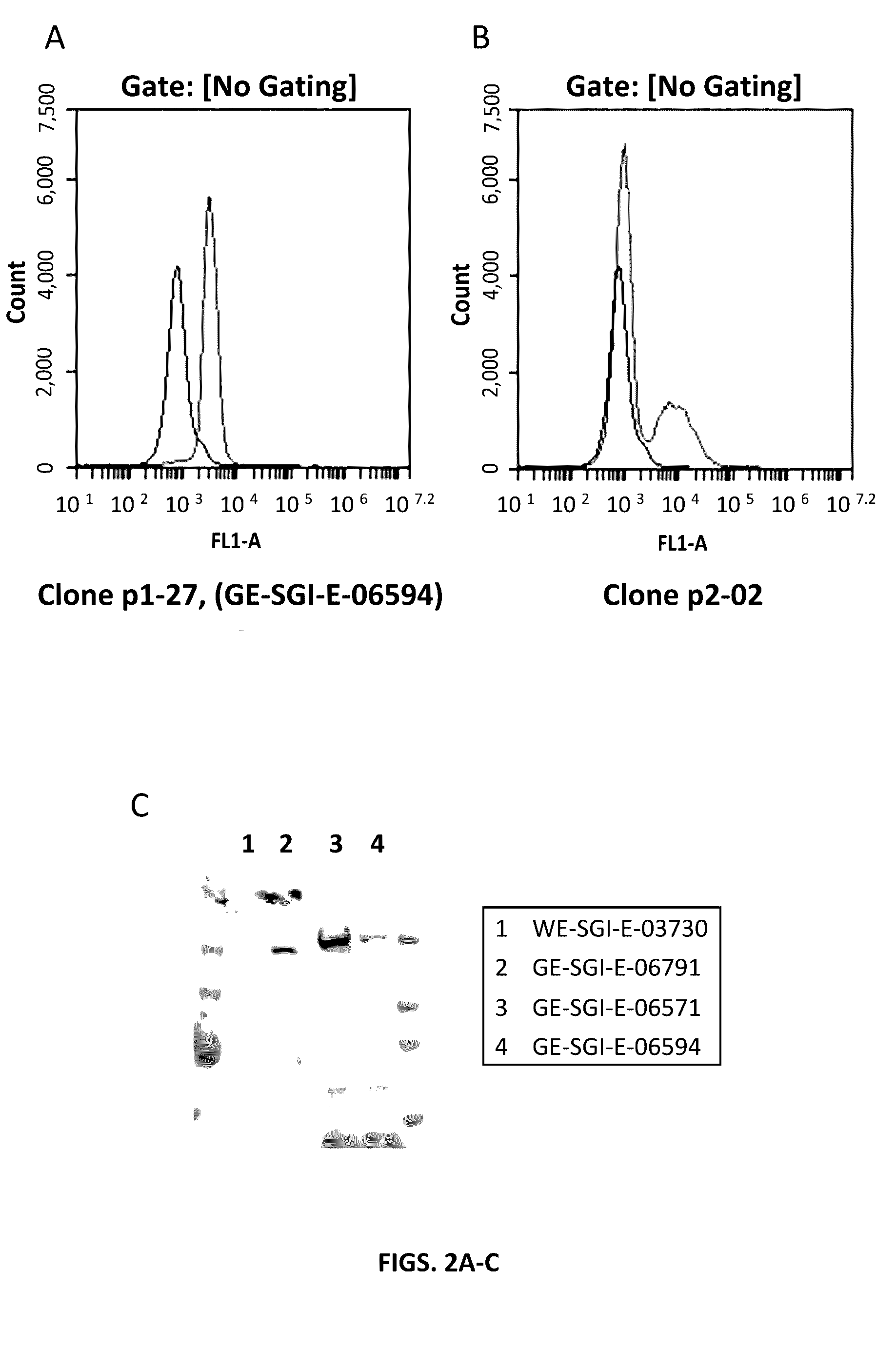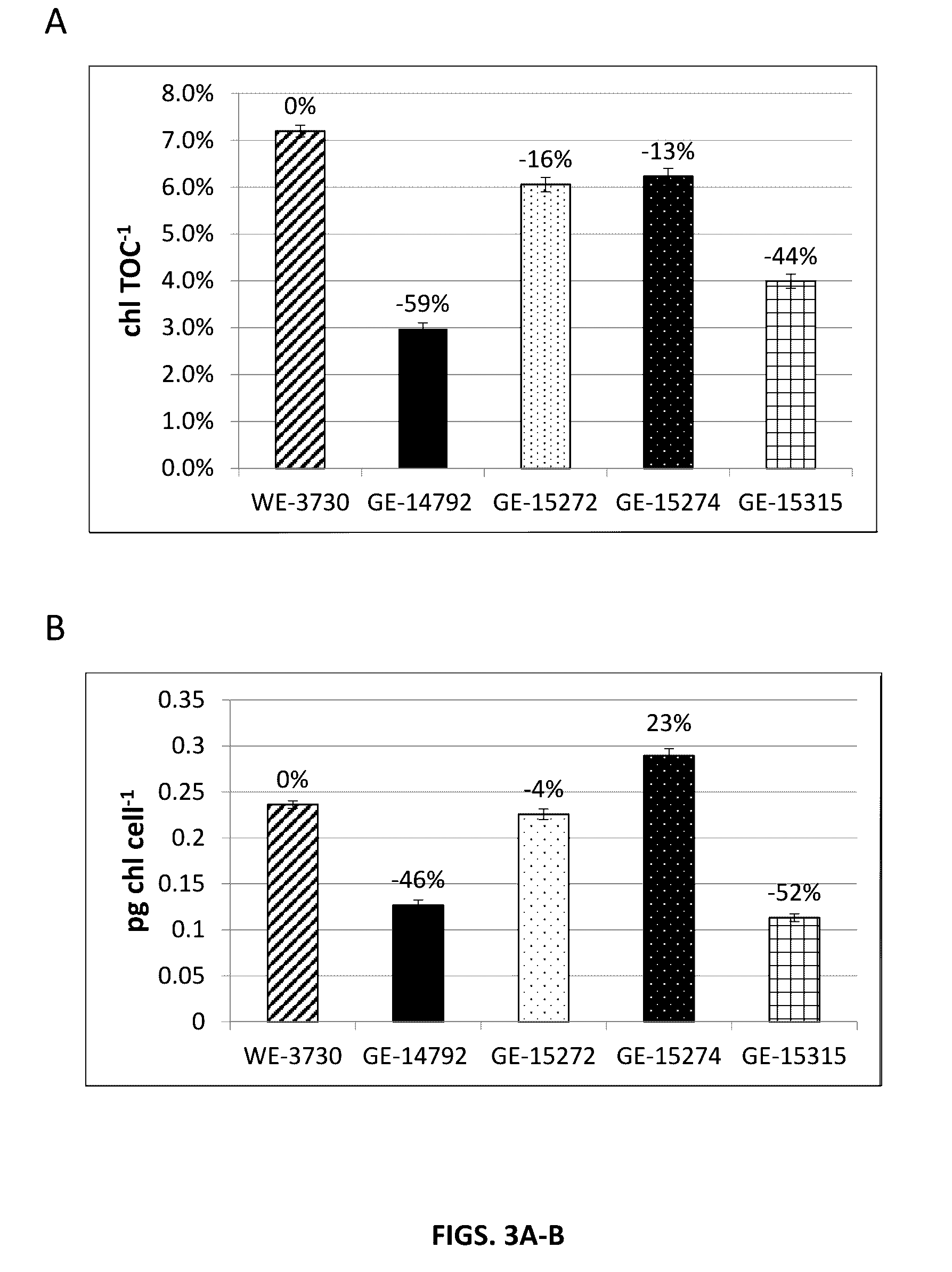Algal chloroplastic srp54 mutants
- Summary
- Abstract
- Description
- Claims
- Application Information
AI Technical Summary
Benefits of technology
Problems solved by technology
Method used
Image
Examples
example 1
Cas9 Mediated Knockout of the cpSRP54 Gene in Nannochloropsis
[0171]The Nannochloropsis genome encodes two putative SRP54 homologs: the chloroplastic gene N. gaditana cpSRP54 (T6676) (coding sequence provided as SEQ ID NO:28, encoding the polypeptide sequence of SEQ ID NO:11) and the cytosolic gene N. gaditana cytoSRP54 (T5548) (coding sequence provided as SEQ ID NO:29, encoding the polypeptide sequence SEQ ID NO:30). The chloroplastic SRP54 gene was knocked out using a high efficiency genome editing Nannochloropsis cell line that expressed a Cas9 gene as disclosed in co-pending U.S. patent application Ser. No. 14 / 986,492 entitled “Compositions and Methods for High Efficiency Genome Editing” filed Dec. 31, 2015, incorporated by reference herein in its entirety. As described in U.S. Ser. No. 14 / 986,492, a highly efficient Nannochloropsis Cas9 Editor line, N. gaditana strain GE-6791, expressing a gene encoding the Streptococcus pyogenes Cas9 nuclease, was used as a host for transforma...
example 2
Photosynthetic Parameters of the Nannochloropsis cpSRP54 Pathway Knockout Strains
[0180]Chlorophyll contents of the N. gaditana knockout mutants GE-14792, GE-15272, GE-15274, and GE-15315 were determined by extracting chlorophyll from cell pellets using a DMSO:Acetone procedure. In this procedure, 500 μl of culture was aliquoted into a 2 ml microcentrifuge tube and pelleted by centrifugation for 3 minutes at 12,000 rpm at room temperature. The supernatant was carefully removed and the cell pellet was resuspended in 1 ml of 1:1 DMSO:Acetone. The sample was then vortexed for 2-5 minutes at room temperature. Cell debris was pelleted by centrifugation for 3 minutes at 12,000 rpm. The supernatant absorbance was then read on a spectrophotometer blanked with a 1:1 DMSO:Acetone solution at 663 nm and 720 nm. The chlorophyll content was quantified by subtracting the 720 nm absorbance value from the 663 nm absorbance value. The resulting net absorbance value was then multiplied by the dilution...
example 3
Productivity Assay of Nannochloropsis cpSRP54 Knockout Strain
[0184]To test productivity of the cpSRP54 knockout strain, a semicontinuous assay was used. In these assays the cpSRP54 knockout strain GE- and wild type strain WT-3730 were grown up in PM074 medium. The scale-up cultures were used to inoculate 225 cm2 rectangular tissue culture flasks, each of which contained a final total volume of 550 ml of culture after inoculation. Three cultures were tested per strain. The cultures were inoculated so that each 550 ml culture had an initial OD730 of 0.9. A typical inoculum volume was approximately 200 ml of scale-up culture that was added to approximately 350 ml of assay culture medium (PM074). The flasks included stir bars and had stoppers having inserted tubing connected with syringe filters for delivering CO2 enriched air (1% CO2, flow rate, 300 ml per min) that was bubbled through the cultures. The flasks were set in a water bath programmed to maintain a constant temperature of 25...
PUM
| Property | Measurement | Unit |
|---|---|---|
| Fraction | aaaaa | aaaaa |
| Fraction | aaaaa | aaaaa |
| Fraction | aaaaa | aaaaa |
Abstract
Description
Claims
Application Information
 Login to View More
Login to View More - R&D
- Intellectual Property
- Life Sciences
- Materials
- Tech Scout
- Unparalleled Data Quality
- Higher Quality Content
- 60% Fewer Hallucinations
Browse by: Latest US Patents, China's latest patents, Technical Efficacy Thesaurus, Application Domain, Technology Topic, Popular Technical Reports.
© 2025 PatSnap. All rights reserved.Legal|Privacy policy|Modern Slavery Act Transparency Statement|Sitemap|About US| Contact US: help@patsnap.com



